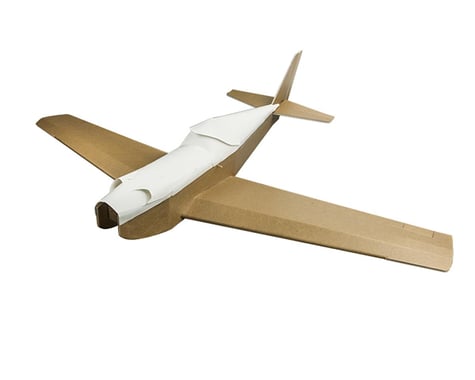The Flite Test Racer is inspired by modern day air racers and has a lot of the same characteristics as the planes it was designed after. This plane is a fast, crisp, precise and locked in machine that cuts through the air like an arrow. Though the FT Racer is very quick, it also has a very wide speed envelope, it tracks very well, and would be a great introduction to sport pattern flying and aerobatics.
Power Pack Compatibility:
Flite Test Airplanes are all designed around the use of various "Power Packs" which include an inexpensive Motor, ESC, Servo, & accessory package to complete each aircraft!
Specifications:
Weight: 1.1Lbs (Fully assembled; without battery)
Wingspan: 40 Inches (1016mm)
Center of Gravity: 2.3 Inches (60mm) from leading edge of wing (Recommended)
Control Surface Throws: Ailerons & Elevator: 12 degrees | Rudder: 25 degrees
Expo Suggestions: 30%
Kit Includes:
- Laser-cut Foam Airframe
- Posterboard Front & Back Turtle Deck
- Posterboard Canopy
- Power Pod (Swappable)
- Firewall
- Push Rods
- Control Horns
- Bar-BQ Skewers
- Velcro
- Specification Sheet
Needed to Complete:
- (1) Brushless Motor: Flite Test Radial C or Park 400 Type, 810kV minimum
- (1+) Propellers: 8x6 or 9x4.7
- (1) ESC: 18-30 Amp
- (1+) Battery: 3S 11.1V LiPo 1800-3000mAh
- (4) Servos: ~9 Gram Micro Servos
- (1) 2.4GHZ Radio System (Radio & Receiver)
- Spektrum: DX6e Radio System
- Futaba: 6J Radio System
- Misc. Building Supplies.
This product was added to our catalog on August 2, 2017


